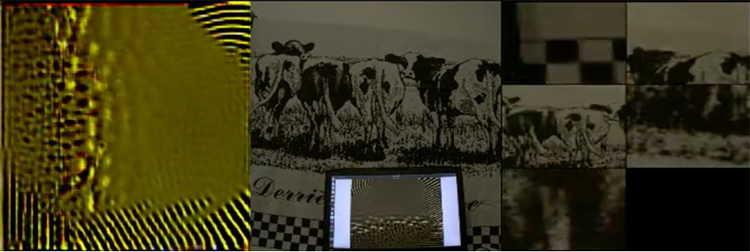Background
The objective of this research was to develop a proof-of-concept adaptive camouflage pattern using SwRI’s Adversarial Learning framework and an updateable, flexible color display. Adversarial Learning focuses on discovering and documenting exploits in various neural network architectures. These exploits focus on using the backpropagation of neural networks during training and generating an input (image pattern) which will induce an erroneous response from a neural network. Existing research in Adversarial Learning has focused on simulated patterns in digital images and then printing those patterns out, which fails to address the real-world losses (e.g., natural sunlight, dynamic shade, and reflectivity of various display materials/canvases) that occur when using such a method. Some research has attempted to address these losses by use of manually crafted loss functions, but they fail to capture an accurate representation of real-world environments.
Approach
Our approach differs from the current state of the art by creating an end-to-end, real-world training process. This is accomplished by training a Generative Adversarial Network (GAN) using subsamples from a live video capture that contains an updateable display. The task of the discriminator network was to continuously improve its ability to discriminate between fake and real images, while the task of the generator network was to continuously improve its ability to fool the discriminator network.
Accomplishments
This research resulted in a novel method for an end-to-end neural network training process by training against the real-world losses that currently hinder most other Adversarial Learning processes. Additionally, the research team gained valuable insight into the limitations of applying this process in outdoor settings, which bodes well for proposing future solutions to overcome said limitations.
The researchers were able to test this end-to-end training process on synthetic imagery, on a Light-Emitting Diode (LED) display (see Figure 1), as well as on an experimental Electrophoretic Display.

Figure 1: Example of GAN Learning Intricate Checkerboard Pattern and Compensating for Color Skew on LED Monitor. The most successful patterns generated using the live monitors showed a stark difference compared to the patterns generated in synthetic/simulated imagery, thereby proving that this end-to-end technique is a large step in the right direction for advancing the field of Adversarial Learning.
